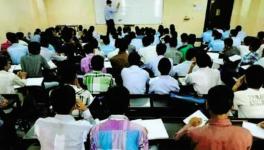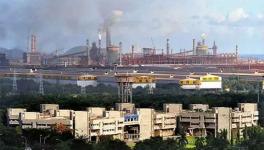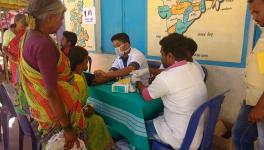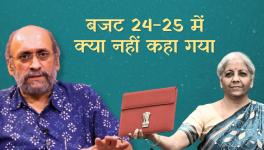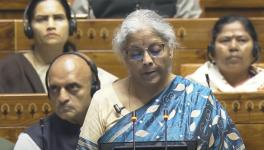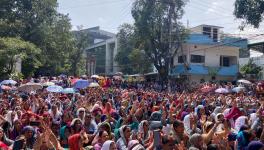India’s Slashed Education Spending Should Alarm All
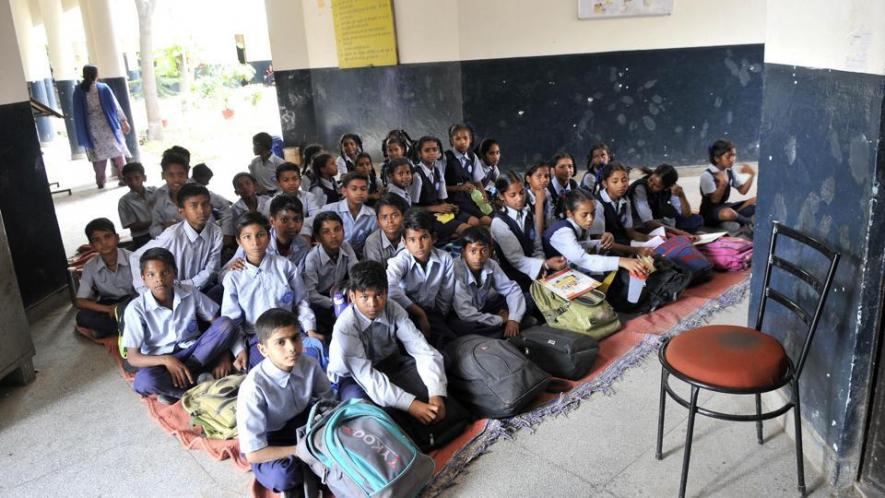
Image Courtesy: Hindustan Times
In recent times there has been growing discontent in universities and colleges over rising fees and cost of education. The growing worries about access to higher education for students of modest means extend beyond this, to the steady privatisation of higher education. Already, according to the government’s own data, nearly 77% of the colleges, accounting for about two-thirds of the students, are run privately.
In such a situation, a firm commitment at least to the existing schemes meant to promote publicly-funded higher education is needed. Beyond this, the entire educational sector needs a strong and expanding budgetary base. This alone would ensure school education for all and improve the standards of education, while keeping the doors of higher learning open to students who belong to the weaker sections or remote rural areas.
Seen from this perspective, some recent budgetary trends are a cause of serious concern to educationists and all those concerned with the sustained and broad-based progress of inclusive education in India. RUSA (Rashtriya Ucchatar Shiksha Abhiyan, or the National Mission for Higher Education) is considered a very important scheme of the Union government to improve education in colleges and universities of various states, for making higher education more accessible to students from weaker sections and under-served areas and thereby also to correct regional imbalances to an extent.
The budget for the scheme has been raised in recent years, peaking at Rs 2,100 crore in the Budget Estimate (BE) of the financial year, 2018-19. However, thereafter, some change of perception on the part of the authorities took place as the Revised Estimate (RE) cut the funding drastically to Rs 1,380 crore.
A bigger shock came in the latest budget for 2020-21. The BE has been cut to Rs 300 crore, an 85% reduction.
Compared with the BE of the previous year, this year’s BE drastically slashes the overall allocation. As a result, in the budget for this scheme, the funds maintained under the RUSA scheme for students belonging to the Scheduled Castes were cut from Rs 412 crore to Rs 50 crore. And, the funds kept for scheduled tribes were cut from Rs 222 crore to Rs 25 crore. These are very big cuts indeed.
If we look outside this scheme at the allocation for ‘Scholarship for College and University Students’ (managed by the Department of Higher Education) then, for the Scheduled Caste students, this has fallen from Rs 39 crore in the BE of the previous year to Rs 15 crore in the BE for this financial year, 2020-21. And the allocation for Scheduled Tribes during the same period has fallen from Rs 19 crore to Rs 8 crore.
Further, the budgetary allocations for higher education show a bias that favours a limited number of prestigious institutions while the overall financing of public higher education is increasingly more precarious.
In the case of school education what is worrying is the increasing reliance on cess-financing. According to a review by the Centre for Budget and Governance Accountability (CBGA), this year 74% of the budget for the main school education scheme, now known as ‘Samagra Shiksha Abhiyan’, has been estimated to be financed through a cess charged in favour of education. Additionally, there are gaps in the full commitment of education cess funds over the years.
This year, even the allocation for Kendriya Vidyalayas and Navodaya Vidyalayas is to come from the proceeds of disinvesting Central Public Sector Enterprises and the cess imposed on petrol and diesel sales.
If we combine school education and higher education the overall trends in public spending on education should make us anxious.
The Union government’s budget spending on education, as a percentage of the total Union budget, has declined from 4.1% in 2014-15 (actual spending) to 3.3% in the BE of 2020-21.
Similarly, the Union government’s budgetary spending on education, as a percentage of GDP, has also declined from 0.55% to 0. 44%. This has happened at a time when the need to raise these shares has been clearly articulated.
While the cause of girl students is often strongly advocated, in actual terms the budget of the much-publicised ‘Beti Bachao Beti Padhao’ scheme was cut drastically last year from a BE of Rs 280 crore to RE of just Rs 200 crore. This year, the BE is placed at Rs 220 crore, which is not only less than the BE of the previous year but also less than the actual expenditure of 2018-19.
In addition, there is National Scheme of Incentives to Girls for Secondary Education. Its budget was cut in last year’s RE while this year there is a small increase in the BE.
The National Child Labour Project is important to bring the poorest child to school. Its budget was curtailed drastically during the last year, from a BE of Rs 100 crore to RE of just Rs 79 crore. In this, there is a rise, of Rs 20 crore, to Rs 120 crore in the BE this year.
The allocation for pre-school education is very high-sounding, and impressive statements are also made from time to time, but the allocation remains mainly within the ICDS/Anganwadi framework. The overall allocation for it is marked by severe resource constraints: there was a cut in the RE last year and a marginal increase in BE this year.
Clearly, recent budgetary trends in the education are a cause of serious concern, but even more worrying is that these trends did not receive due attention while discussions were on over the latest Union budget. Instead, the most common headline was—‘5% increase in education budget’—which is quite far from the reality.
In real terms, there was hardly an increase in the allocations for the education sector.
Within this broad situation of poor to no hikes, there were also several important cuts, within and outside the budget, for the Human Resources ministry. This will have an adverse impact on inclusive education. In addition, the pattern of financing, with very high reliance of cess-based financing of school education, is a serious problem.
The writer is a freelance journalist who has been involved with several social movements. The views are personal.
Get the latest reports & analysis with people's perspective on Protests, movements & deep analytical videos, discussions of the current affairs in your Telegram app. Subscribe to NewsClick's Telegram channel & get Real-Time updates on stories, as they get published on our website.









